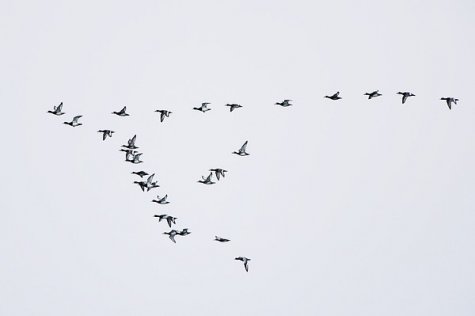Greater scaups leaving
Photo:Arne Ader
Translation: Liis
Greater scaups
Greater scaup Merivart Aythya marila
At the end of summer thousands of greater scaups arrived in Estonia to moult, mostly near the Väinameri isles. Only on Vilsandi a few breeding pairs have been observed. The greater passing autumn migration lasts during October-November; a couple of hundred birds stay in the coastal waters to winter.
During the summer moulting the green iridescence of the head feathers of the males disappears and the breast turns dark grey. The neck of females is dark brown and the body dully brown. The conspicuous white ring around the beak is characteristic of the females.
These diving ducks feed on small molluscs, crustaceans, bristleworms and mussels, but they don’t refuse vegetable food when nothing better is to be had: algae and bladder wrack. In spring, beginning in March, the passing migrants are ten times more numerous than in autumn – 175 000. On autumn migration the majority simply choose a more northerly route.









